The Haddock Mystery
Gruff, hot-tempered, sometimes pathetic yet irresistibly endearing: no doubt about it, this is our man. A grumbling sailor with a big heart and Tintin’s loyal companion (since The Crab with the Golden Claws), he sails through the albums in a storm of explosive outbursts and moving displays of emotion. Yet behind his weathered face and his old sea dog’s cap lies a mystery: where does he come from?
A French knight from the time of Louis XIV? An English admiral forgotten in the archives? A mere homonym of a North Sea fish? Or, more troubling still, Hergé’s own double, hidden beneath a black beard?
The affair is thorny, the evidence scattered, the witnesses contradictory. Before the Thom(p)son twins meddle in the imbroglio, let us uncover the secret of the origins of the most thunderous captain in comics.
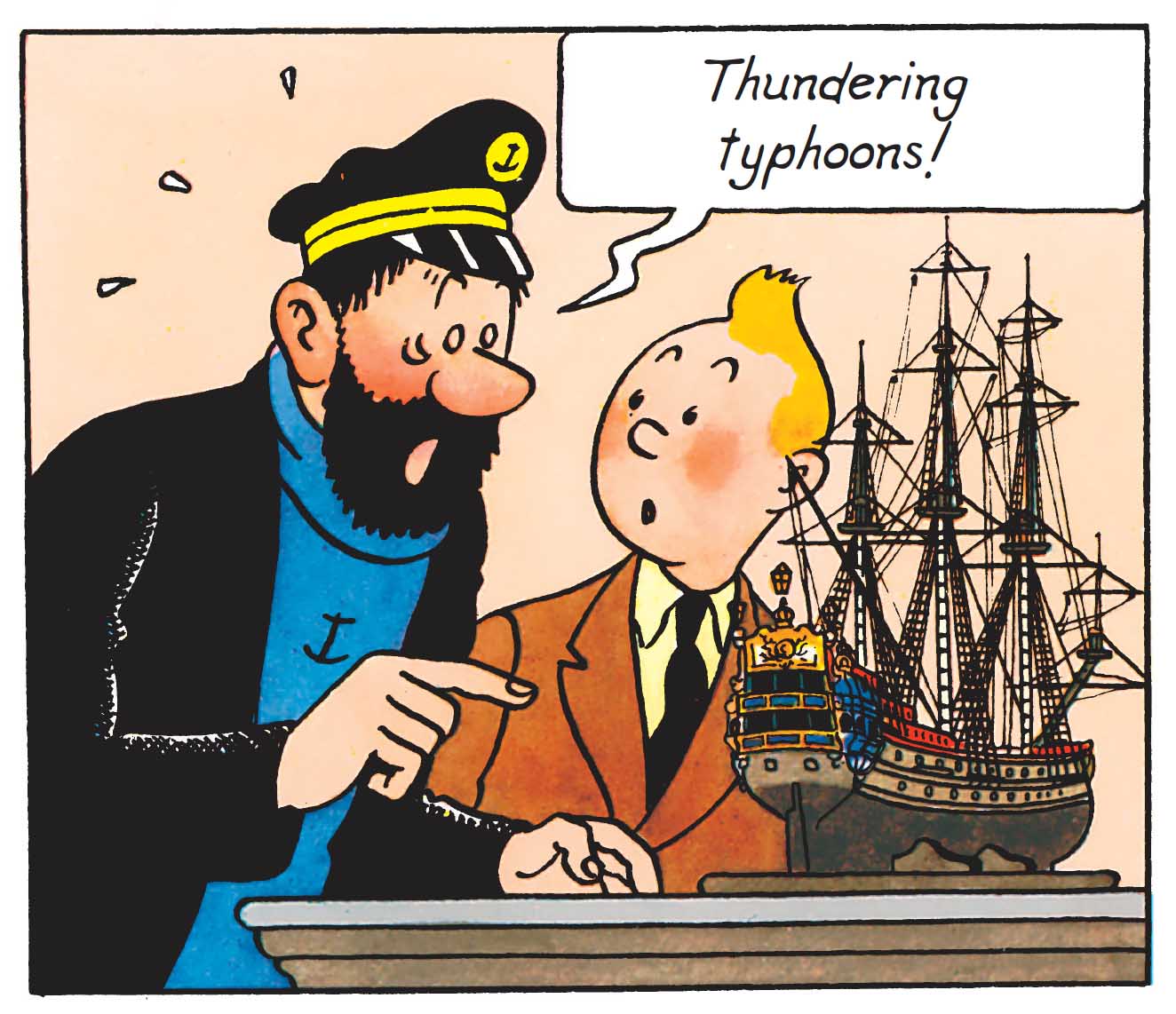
The Haddocks of flesh and bone
The case thickens right away. Real Haddocks, well… there were plenty of them! Long before Hergé ever sketched his captain, several Haddocks were already navigating the seas of History.
Specialists have noted several intriguing occurrences. As early as the 17th century, a certain Richard Haddock made his mark as an English admiral. His career, inscribed in the annals of the Royal Navy, has surely caught the eye of researchers puzzling over the origins of the paper captain. A small but telling detail: his grandfather had commanded the Unicorn – or, in plain French, La Licorne!
Closer to us stands the figure of James Herbert Haddock, captain with the White Star Line. His presence in maritime records reminds us that the name Haddock continued to sail on, firmly anchored in seafaring memory. So only great names then? Not quite. The archives also mention a Haddock involved in a case of cargo resold in England in the 17th century.
Even before Hergé created his thunderous captain, the name already drifted in the archives. These echoes, noted by specialists and compiled in the documents, form the first piece of evidence: the name Haddock is not merely a cartoonist’s invention – it carries a real history, a trace we can see in filigree in the captain’s complex personality alongside Tintin.
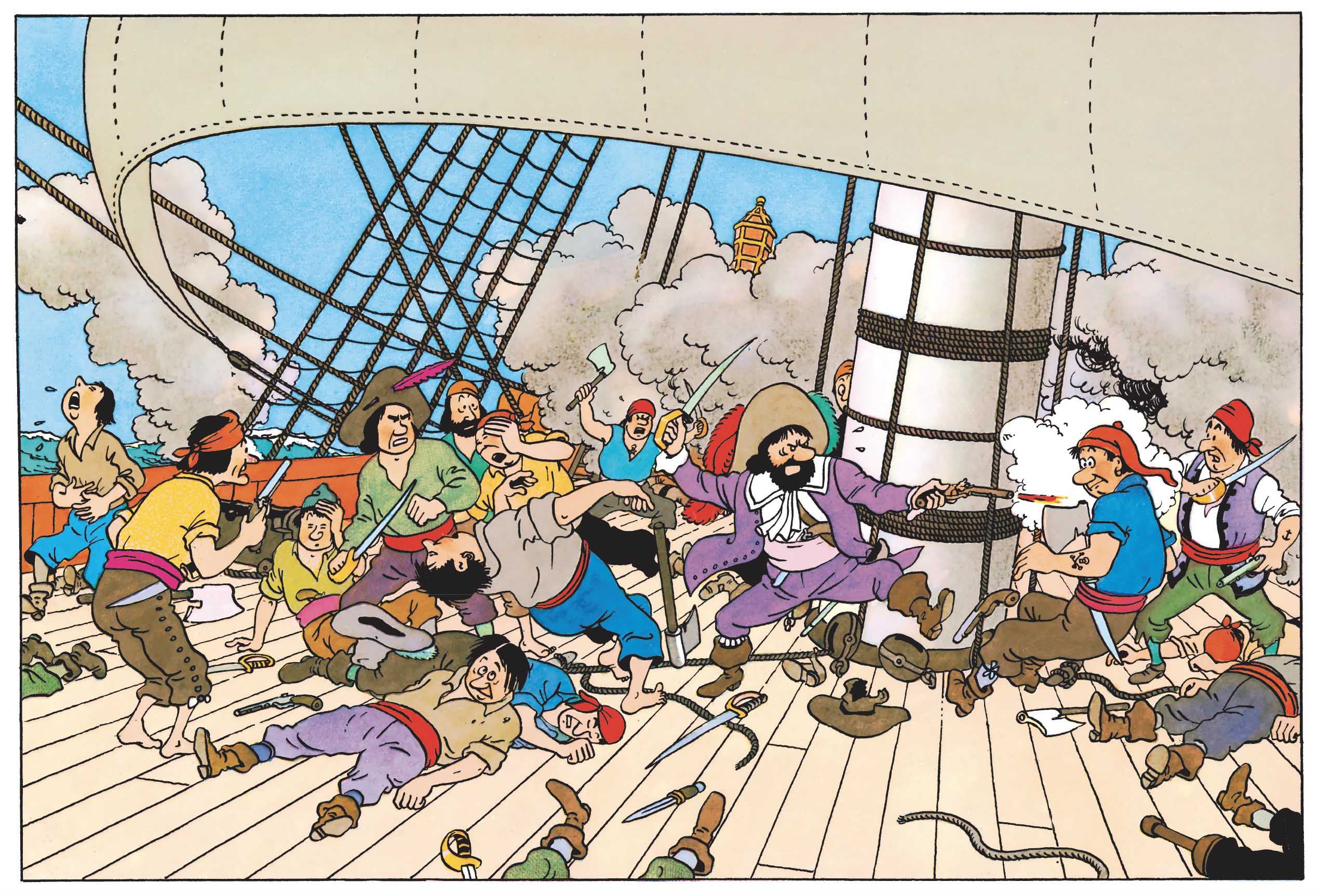
Sir Francis Haddock, the imaginary ancestor
After naval records and real-life Haddocks, our search takes an unexpected turn.
It is in The Secret of the Unicorn that this name first surfaces. A naval officer under Louis XIV, he commands the vessel The Unicorn. His fate changes when he confronts the pirate Red Rackham: a memorable duel that ends with the scuttling of his ship to prevent its cargo from falling into enemy hands. With this heroic gesture, Francis Haddock enters legend and the captain’s genealogy.
Hergé thus endowed his character with a prestigious ancestor, knight and captain of the Sun King. A way of adding depth to Haddock, who until then had been little more than a hot-tempered sailor. This invented lineage elevates his status into a whole new realm! From a man with no ties, he becomes heir to a noble naval legacy. Marlinspike Hall, supposedly granted long ago by Louis XIV to this knight, seals the legitimization: Haddock is no longer just Tintin’s companion, he is the guardian of a heritage.
And yet, no trace of Sir Francis Haddock can be found in historical records: he is purely Hergé’s invention, a fictional creation designed to enrich the story. Thus, the knight of Haddock is at once a pillar and a shadow, an invention blurring the boundaries between History and fiction, between real ancestors and imagined ones.

A convenient name
Hergé’s notebooks reveal that he hesitated for a long time. Here’s a detail that thickens our case. Among his drafts appear improbable variants: Mastock, Kappock, Harrock… all revealing the creator’s hesitation before settling. In the end, “Haddock” imposed itself. In English, it designates a humble fish of the northern seas. Enough to add involuntary comedy to a captain named after a seafood staple.
When asked later, Hergé brushed the question aside: “It just came like that.” Yet Tintinologists have sniffed out another lead. A few years before the captain appeared, a film was packing theaters: Captain Craddock (1931). In that film, a sailors’ chorus proudly sang, “C’est nous les gars de la marine” (we are the boys of the navy)... a tune that would resurface almost identically in the French version of The Crab with the Golden Claws, when Haddock first bursts onto the stage. Coincidence, or deliberate nod?
Another delightful detail: the name is constantly mangled in the albums, notably by Castafiore, who calls him Kappock, Mastock or Hoddack. As if Hergé were winking at his own early indecision, reminding us that this name, chosen almost by chance, could easily have been something else.
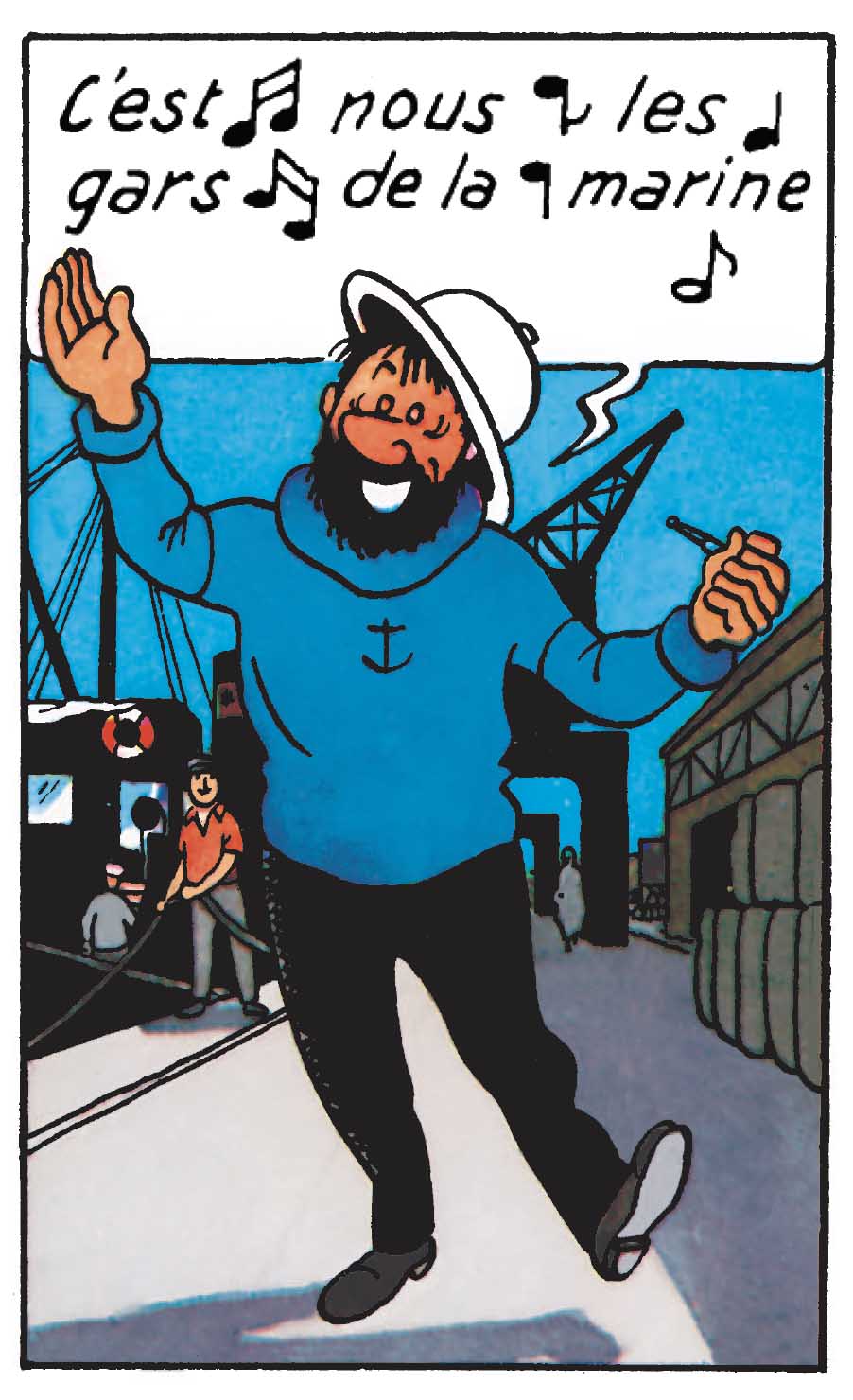
The shadow of pirates
Every investigator knows: you must examine the entourage. A name takes on meaning only through its adversaries. And in the Haddock lineage, one pirate’s shadow looms large: Red Rackham.
Introduced in The Secret of the Unicorn, Rackham is presented as Sir Francis Haddock’s sworn enemy. Their swordfight at sea seals both the knight’s legend and the captain’s inheritance. But behind this flamboyant figure invented by Hergé lurk very real models.
Specialists note that his name echoes John Rackham, better known as Calico Jack, the English pirate hanged in 1720. His Caribbean exploits fed an imaginary world from which Hergé could hardly escape. Another possible source of inspiration: Montbars the Exterminator, a feared French privateer of the 17th century, whose violence and swagger resonate with Red Rackham’s traits.
Hergé did not slavishly copy: he mixed, reshaped, and wove this mythical pirate into his own legend. By making Rackham Francis de Haddock’s adversary, he offered Haddock an ancestral foe, a hereditary nemesis of sorts. And at the same time, he inscribed his character within the great tradition of pirate tales, where epic sagas mingle with archives and history itself becomes raw material for fiction.
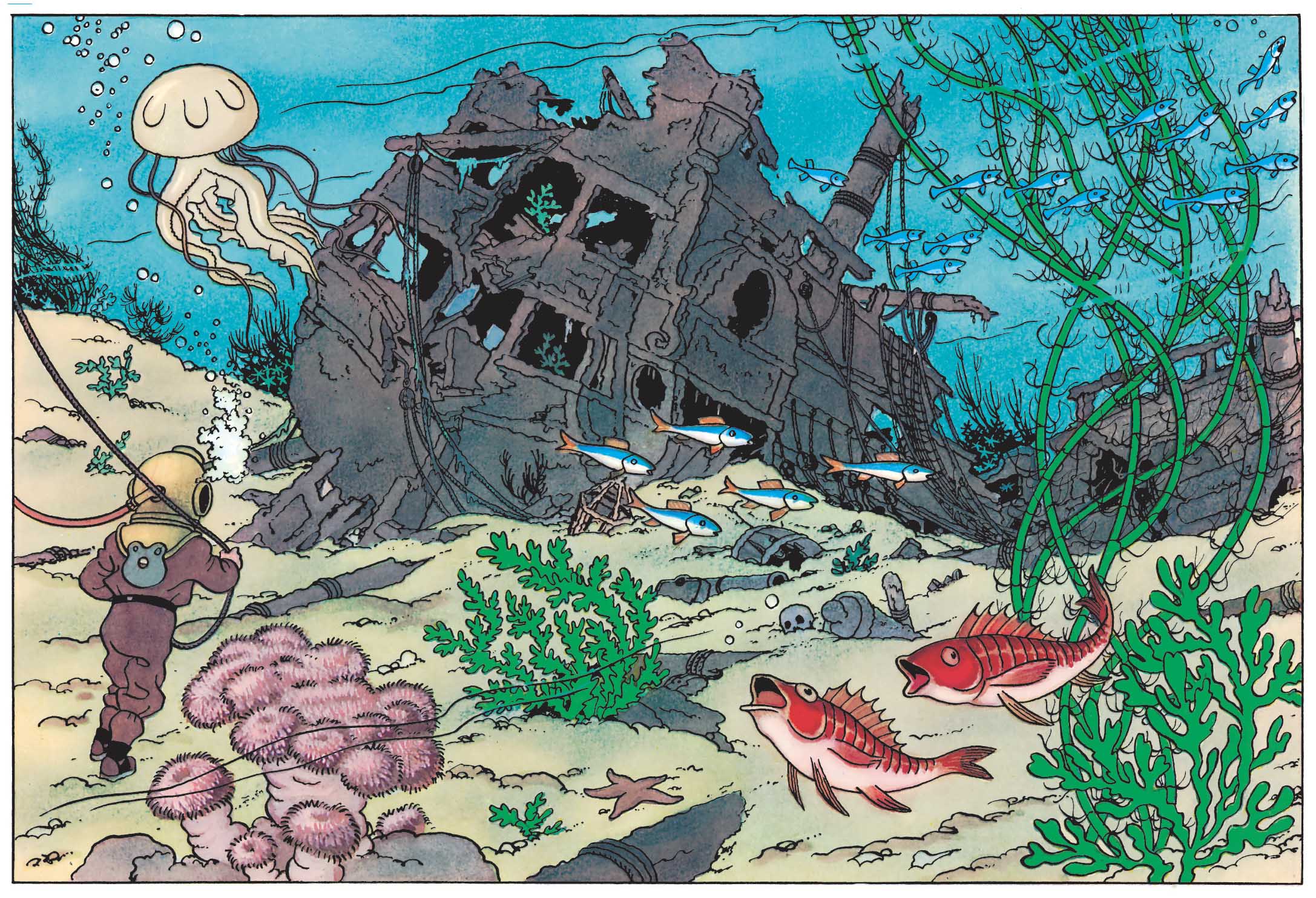
The lineage is marked by this eternal confrontation between order and disorder, between royal navy and buccaneers. And perhaps it is here that we glimpse part of Haddock’s fiery and excessive temperament, an imaginary inheritance from ancient battles, minus the wigs and lace cuffs.
Marlinspike, the family anchor
In any investigation, there are times when a place speaks louder than a witness. For Captain Haddock, that place is unquestionably Marlinspike Hall.
It is in The Secret of the Unicorn and Red Rackham’s Treasure that we discover its origin. Once the property of Sir Francis de Haddock, it was supposedly offered by Louis XIV in gratitude for the knight’s service. The very real Château de Cheverny served as the architectural model. Through this bequest, Hergé tied his captain to a prestigious lineage and sealed the transmission of heritage.
When Haddock settles at Marlinspike, the hot-tempered sailor finally finds an anchor. Until then, he drifted without solid ties, caught between ship decks and bouts of despair. With the château, he inherits a home, a memory, and an implicit title.
But Marlinspike is more than a backdrop. It becomes almost a character in its own right in the saga, a center of gravity where adventures converge. For Tintin, Calculus, and Haddock, it is a hideout, a refuge, sometimes even a stage for comedy. For the captain, it is legitimization: he is no longer just a sidekick, but an heir, bearer of a name and a place.
By giving Haddock this castel, Hergé completes his imaginary inquiry into origins. And after all, a squire is better than a cave-dweller, and Marlinspike a fine symbol of belonging and lineage.
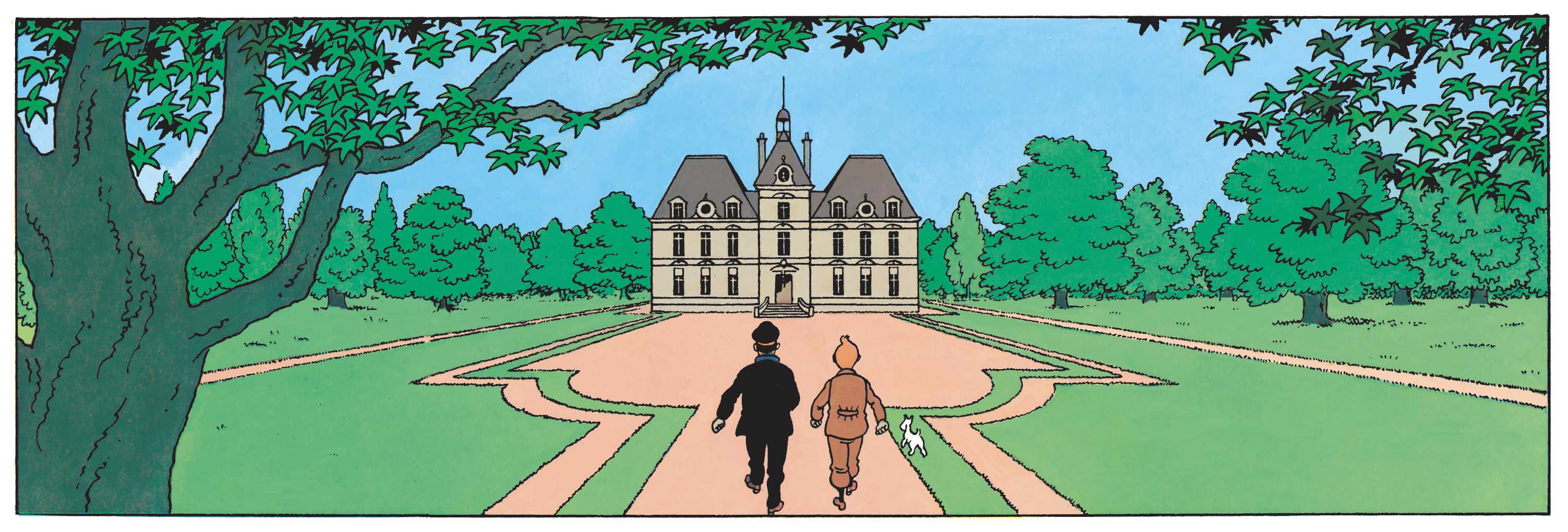
Hergé or Haddock
In every investigation, there comes a moment when one stops searching outward and looks into the heart of the file. In Haddock’s case, one final clue leaps out. What if his true ancestor were not an English admiral, a Sun King’s knight, or a forgotten pirate, but… Hergé himself?
Georges Remi, alias Hergé, admitted that Haddock resembled him. Where Tintin embodied youthful virtue, courageous but almost too perfect, the captain became for his creator an outlet: a character able to voice anger and despair, those all-too-human flaws the young reporter could not carry.
In contrast, Captain Haddock is defined by an immutable outfit: his blue sweater marked with an anchor and his sailor’s cap. Simple, almost ordinary, yet this silhouette has become emblematic. We sometimes glimpse him in a black overcoat, in pajamas or a bathrobe within Marlinspike’s walls, even in a suit for rare social occasions. But it is always that sweater-and-cap duo that remains his true uniform, etching his image forever into readers’ memory.
Thus the file closes. The clues have led us from naval archives to piracy, from an imaginary knight to a very real château, before circling back to the shadow of the creator himself. Captain Haddock’s origins are not to be sought in a single lineage, but in an intricate weave: heir to a naval myth, and maybe the human double of his creator.
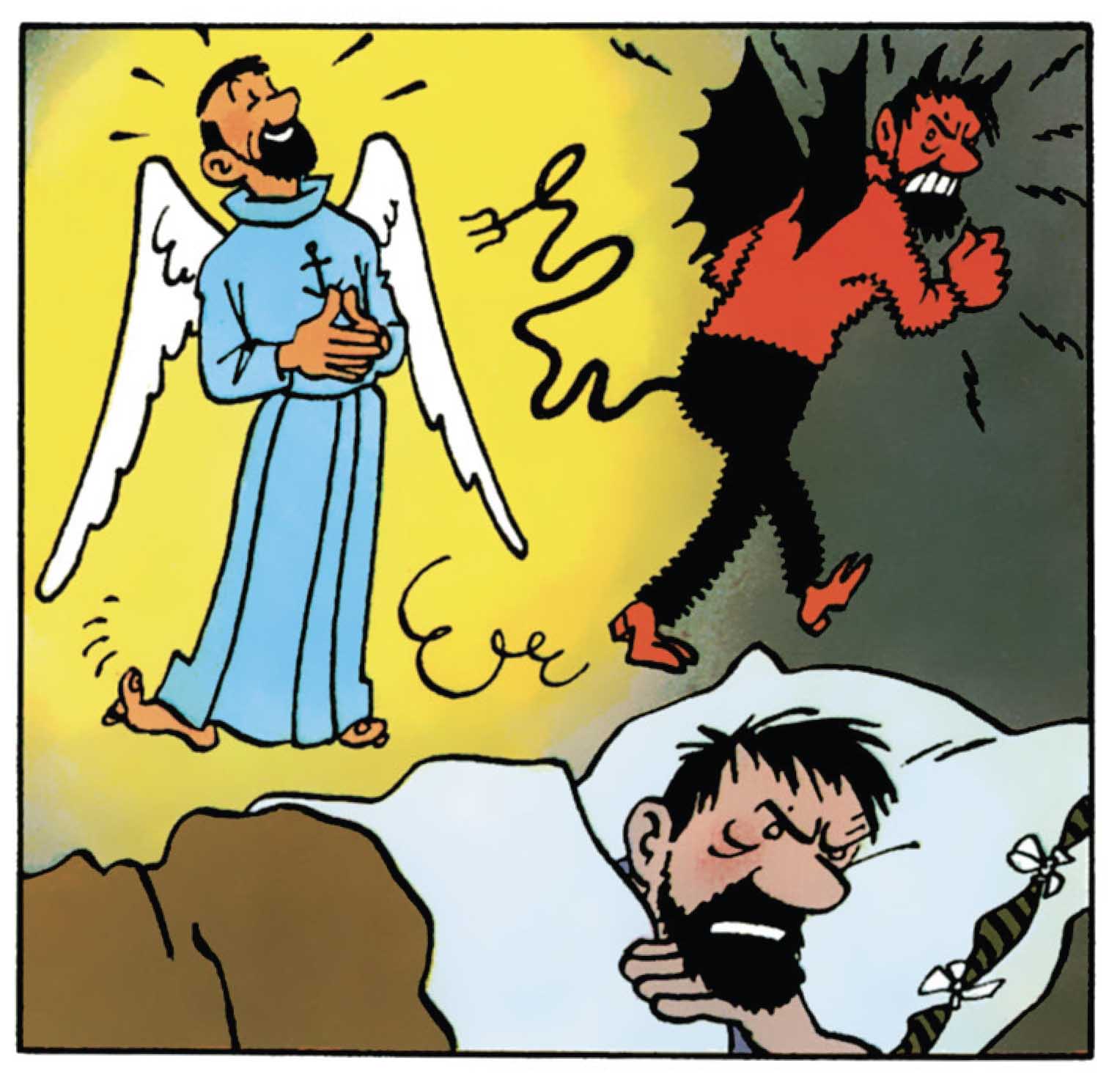
Texts and pictures © Hergé / Tintinimaginatio - 2025




 News
News Forums
Forums E-books
E-books

